After reading a lot of them, here are the 7 best negotiation books for me. Here is what makes these books special:
One word of warning ...
There is no one perfect strategy that always leads to negotiation success. Instead different models apply to different situations (read on, to see what I mean). There are no guarantees for negotiation success.
I would say, that a negotiator's life includes life long learning. And these are the 7 best negotiation books I have found. If you read down until the end, I will also show you my personal all time favorite and why I like it so much.
Side note: Each review contains the price according to Amazon.com. This is NOT an affiliate link! I recommend these best negotiations books because of their quality and not because I receive a commission.
I also have a personal favorite that I reveal in my conclusion further down below. Read on, which one it is and how it compares to the other best books on negotiation listed here.
Are you ready to discover my view on the best negotiation books? Read on!
3-d negotiations by David A. Lax & James K. Sebenius
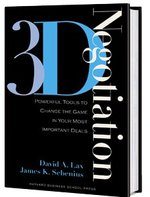
In a nutshell ...
Preparation promises more success than applying "On the table tactics" alone.
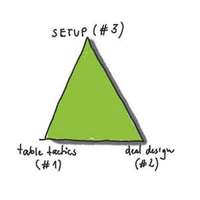
The 3-d in the book title stands for 3-dimensional negotiations. The 1st dimension is negotiation tactics. That's what you are applying while you're sitting in a negotiation (on the table so to say). And the 2nd dimension covers deal-design aka added value . Main focus of this book yet lies on the 3rd dimension, the setup. The authors prove, that negotiation preparation is crucial for great successes.
It also covers a lot of basic terms. For example the BATNA - Best Alternative to Negotiated Agreement. Or the ZOPA - Zone of Potential Agreement. You will find these terms in other publications, too.
What I liked & What I didn't like
Pros
Cons
Preparation

I liked that the authors have such a strong focus on negotiation preparation, aka the "setup". I am still surprised, that the same people who say "everyone could do procurement" don't prepare at all.
This work covers some research topics for preparation. Spend with this supplier, a personal profile of my negotiation counterpart, financial figures. This should be a no brainer for pro negotiators. Lax and Sebenius give you a good blueprint you can follow.
Move Northeast
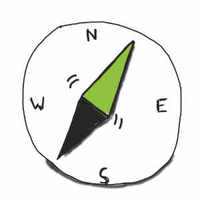
The term "move northeast" refers to adding value to a deal without giving to much of your own assets away. Sometimes items that are cheap for you are very valuable to the other party.
Always try to find these items. Enrich deals with things like references, management introduction or similar. Easy for you but important to your counterpart.
Backward Mapping

You could phrase this as "start with the end goal in mind". Get clear for yourself, what is the best outcome you want to achieve.
From this point onward, you draw a map with certain strategic elements to where you are now.
Very important here is that you check if your underlying assumptions are still valid. Re-map if not!
Too Optimistic

For me this negotiations book was relying too much on "win-win". Or said in another way: everyone always wants to achieve the best outcome.
I found that this is not true in every case. Sometimes people push hard because they love the feeling of winning, no matter if it's a real win or not. In these cases ZOPA (zone of potential agreement) may not work for example.
By the way, this is also true for internal team members.
Leaves Out Psychology

The concept presented in this negotiations book doesn't give enough attention to psychology. I would love to see different approaches for different personality types for example.
A dominant counterpart may react differently to a tactic than an introvert. How do you tailor your tactics to these different personality types?
What is unique about it?
The terms the #7 in the list of best negotiations books introduced to us negotiators became standard. ZOPA or BATNA take negotiations from the fluffy level down to earth.
Also the inclusive approach to prep, execute and plan is a very hands on and good approach.
Applied to a real negotiation ...
I recently (again) used the ZOPA approach to map out, where we can meet in a potential negotiation. The negotiation team itself was unclear, what the goal of the supplier was. We had an ongoing business and it was obvious, that we didn't have a good chance to challenge this vendor with another one.
So we sat together and took his first proposal which was a very high pricing anchor. We then mapped out our end goal, which was the end price we wanted to achieve (aka backward mapping).
We then showed the other party our view on the zone of potential agreement and said "this is the area we must reach". This of course was a very open move which is not always possible with every supplier. But here it worked. There was a constructive way, also by adding extra value in services (moving northeast).
Summary
This negotiate book asks the reader for an ongoing task. Check the negotiation strategy based on the three different focus points. Negotiation tactics, how to design a deal and the set up of the negotiation (aka the 3 dimensions). It is very important to understand that negotiations not only happen on the table but off the table as well.
Getting More by Stuart Diamond
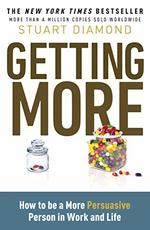
In a nutshell ...
Masters know the invisible tools for negotiations. There's no one size fits all, be flexible and understand your counterpart.

If you want to really shine in your profession, this masterpiece is one of the best negotiation books. Pulitzer-Prize winner and bestselling author Stuart Diamond has an amazing track record.
His approach is a holistic view of things. There's not the one negotiation trick he focuses on - as in so many other bad negotiations books. It's a multitude of topics. Things like different angles, emotions, increasing flexibility. And last but not least getting a feeling for how the other party thinks.
What I liked & What I didn't like
Pros
Cons
The Perception Gap

You may think that all men and women are born equal. And that is fine from a political point of view but is a very bad approach for a negotiation.
You must consider, that our assumption of what the other party wants is wrong. Therefore they do not per se value the same things that are important to us. If we embrace growth it does not mean that it's of the same importance for them.
I like, how Professor Diamond phrases this. He calls it misperception and miscommunication. However, he shows a very decent way, on how to improve here.
His initial "red dot" example at the beginning of the chapter is amazing!
Value the Relationship

I like the real life examples that the author applies. Because they focus on giving value to the relationship. In other words, they are very hands-on and understandable.
For example there is this one case, where he mentions a negotiation with a friend.
We know each other now for five years. Do we want to throw our investment in these 1,500 days away because of one bad day?
An underlying theme in this book is to put things into perspective and the story above is a good example of it.
Personal Style

I liked the idea of different personal styles. As per Professor Diamond's perception there are 5 major styles:
- Assertive
- Collaborative
- Compromising
- Avoiding
- Accomodating
He describes each in a little bit more detail. More important the author gives an insight in when to "use" them in your communication. However, he also covers which pitfalls they might have.
Too soft

Sometimes the "value the other person" approach is to soft and too fluffy for my personal liking. There are times, where you apply force to the other party.
Yes, this may sound very aggressive. But in some business situations, aggression is what you need. If you never ever want to apply force, procurement is the wrong career path.
What is unique about it?
The model of "Getting More" as shown in this item in this book on negotiation skills splits into 4 quadrants.

Quadrant / Step 1 - Problems & Goals
- Goals: What are they?
- Problem(s): Which obstacles along the way?
- Parties: Who's involved?
- What if no deal?
- Preparation: How to prepare?

Quadrant / Step 2 - Situation Analysis
- Needs: Who needs what?
- Perceptions: How do we see each other?
- Communication: What's our "style"?
- Standards: Who has which?
- Re-examine goals: Watch over the first 9 steps - any changes?

Quadrant / Step 3 - Operations & Risk Reduction
- Brainstorm: Who needs what?
- Incremental: How to reduce risk?
- Third parties: Who influences (and is not at the table, see below)
- Framing: What's our context?
- Alternatives: Which items can we deal?
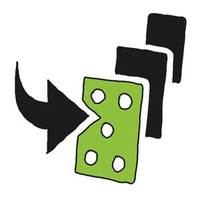
Quadrant / Step 4 - Actions
- Best options: Where are our priorities?
- Who presents: What are the roles?
- Process: What rules to follow?
- Commitments: Which promises can we give?
- Next steps: How to proceed?
If you apply the framework from "Getting More", you will be a very well prepared deal maker. Ultimately your deals will be more successful. And yes, it will take time.
Applied to a real negotiation ...
One approach out of this negotiations book worked very well for me. I had a difficult supplier who somehow put us into a very uncomfortable situation.
At the same time I got the question what we could do about this supplier. And that somewhere in the future he's phased out. When I entered the negotiations we soon discovered the elephant in the room. It was the head of my organization who requested to change the supplier.
Once we identified this common enemy, we developed strategies to prove him wrong. And we did it together. This meant that the supplier made concessions in service and price to help me prove "my boss wrong". A win-win (as coined by Roger Fisher and William Ury) although I do not like this approach too much.
Summary
Number 6 in the list of best negotiations books is an awesome approach to guide negotiators. The framework helps with preparations. Above all it provides real ife examples. Hands-on practices help you to reach your goals in negotiations. Especially the 4 quadrants are a good metaphor for a negotiation's lifeline.
Negotiation Genius by Deepak Malhotra & Max Bazerman
Book information
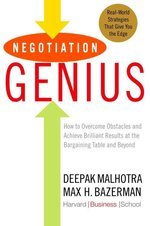
In a nutshell ...
Negotiation results are also determined by what happens OFF the table. Ensure you have invested time and effort into preparation

In a certain way this publication is an extension to 3D negotiations. Because it covers a lot of the concepts from there. Especially the preparation part looks deep into BATNA, ZOPA and Co.
It has a strong focus on preparation which is a good thing.
This book gives a hands-on way to apply theories in real life negotiation situations.
What I liked & What I didn't like
Pros
Cons
Focus on First Offer (Framing)

This negotiations book puts strong emphasis on making the first offer and making it right. The first offer sets the reference for all other discussions with your counterpart. It's also known as framing or anchoring. We have covered the concept of framing also in this post.
It is especially interesting that the authors "help" you on how to structure your first offer. As a result, it sets you apart from all these "wannabe" negotiators. You know, the folks who shout out unsubstantiated first offers.
Real life application of Influencing Factors
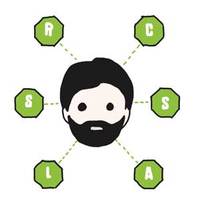
In another of my top recommendations for the art of negotiation (see my review below) we find 6 factors of taking influence:
This negotiations book from Deepak Malhotra shows real-life applications of them. See them in action with a focus on deal making.
Package Deals
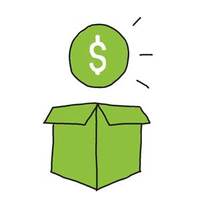
This negotiate book has a very strong section about packaging. This means that you combine certain aspects of a deal with other aspects.
Not only does the work show a good way on how to structure those deals but also how to execute. By the way: this is yet another preparation task. It also indicates when it makes sense (hint: not every time).
Concepts from other books
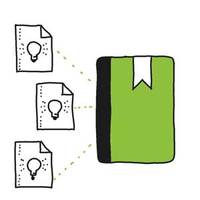
Professor Malhotra covers a lot of the things that we have seen and read elsewhere. The concepts of BATNA or ZOPA as well as the influencing factors are not groundbreaking new.
#5 in my list of best negotiations books should spend less time on explanations. It could reference more to other negotiations books. And it should focus even more on how to use the tactics.
Read in the right order
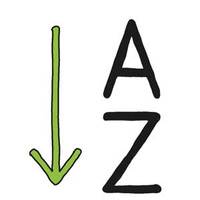
Not reading these books in the right order might confuse you. Therefore you should read these books in a certain order. This is especially true for this book.
Read this work to get a first understanding and then the others to deepen your knowledge. I would suggest to read them in this order:
- Negotiation Genius (this book)
- Negotiating the impossible (the sequel to this book if you want)
- 3D Negotiations
- Influence
What is unique about it?
This book forbids you to make unilateral concessions. Never give something without getting something in return. The very strong focus on this point is quite important. It still happens way to often, even for experienced negotiators.
I also read the idea of making "many offers at once" first in this book.
Dear Mr. Supplier, now you can choose, which fits your needs best??
Applied to a real negotiation ...
I have applied in-depth preparation to a very successful negotiation.
The initial situation was somewhat difficult. An existing and still running contract with a monopolist. Improvements required from our stakeholders during contract lifetime.
Usually one would expect that the counterparty says "wait, until the contract is over, then we can talk"
Through deep preparation we were able to not only get them to the negotiation table. They also made some very good concessions. Hence this led to an improved contract. We were trying - and succeeded - to find out what was important to them.
For them it was very important to keep the good relationship with us. Therefore we could use this in our negotiations.
Summary
Prepare, prepare, prepare. Then package the deal in an interesting way using your findings from preparations. Use the psychological factors of taking influence to get to the finish line.
This is somewhat of a practice-book to the other best negotiation books listed here.
Negotiating the Impossible by Deepak Malhotra
Book information
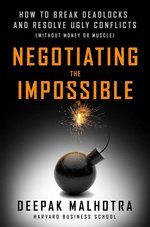
In a nutshell ...
When you have no money or muscle power in a negotiation, rely on framing, process and empathy.

This is the second book by professor Malhotra, that made it to the list of best negotiations books. That is for a reason. In this book he uses the 3 concepts to solve even the deadliest deadlocks. They are framing, process (and the control of it) and empathy.
Applying these techniques will make you a legend in your organization. More often than not, you will be able to find a way forward in situations that others find impossible to solve.
What I liked & What I didn't like
Pros
Cons
Strategic Ambiguity
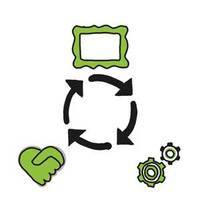
This term means that you claim something without being too specific. That sounds counter intuitive first but it helps.
Be unspecific so you do not loose face and can "stay at the negotiation table". Otherwise you have to push through the statement you once made.
The author shows ways to negotiating agreement without giving anything. Because you don't have anything to give.
1st Mover Advantage
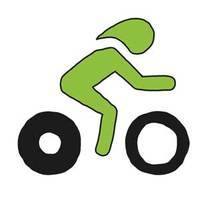
Another thing I loved about #4 on my list of negotiation books is that it puts such a strong focus on anchoring. This is also called framing. I'm a fan of this psychological concept and the author shows amazing ways to structure such a frame.
As said before, preparation is everything. In this specific book there is a strong intention to be the first to set the frame.
Once you have set the frame in a negotiation you should stick to it as long as possible. The examples in this book give good guidance on how to do that.
Processes need attention

Another thing that is quite unique about this book is that it puts such a strong emphasis on process. Most importantly in these deadlock situations. Process in this negotiations book means the process of negotiating itself.
The unique approach suggests that you align on process with your counterparts. Do this before you even start negotiating. You can consider process here as a negotiation tactic itself. This gives you a frame of reference that both parties can rely on.
A thing I liked in this book are the process questions. Use them as a checklist. They make an easy to apply negotiation tool.
Once you and your counterpart are clear about the process, you get to the core of the negotiation.
Subjective Conclusions
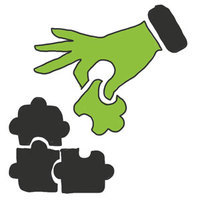
The book has lots of examples from politics. This ranges from the US constitution to the Paris peace treaty after the Vietnam war.
Sometimes I was not sure if this applies to business situations. It's a difference - from my point of view - if you want to achieve 8.7% price discount or if you want to end a war.
The author also draws conclusions from these situations. But he has not executed these - historic - negotiations himself. So it's more an academic view.
Questionable deduction (for some examples)

Some of the conclusions from the view of historic examples are questionable. I would have come to a different conclusion.
Here's an example. The motivation of the Soviets in the Cuban Missile Crisis is questionable. But that's my personal view and of course I have also not been part of Kennedy's negotiation team.
What is unique about it?
This work is for the hard projects in a negotiators life. Use other approaches from this list of best negotiation books when you have more power. But make sure to rely on this work when stakes are high and discussions are difficult.
The idea of framing, process and strategic empathy is a good way to solve the deadly situations.
Applied to a real negotiation ...
I was recently in a very difficult negotiation with a monopolist who threatend us. They even started stalking us. It went so far to wait uninvited in the entrance of our office building.
Applying the power of process and aligning on every little bit helped us immediately. We put everything in reference to the process. Even more important, it created a reliable baseline for both parties to work from.
This included answering several questions. Who will sign first? When will these signers be available? Who sends the documents and how? And more of these types of process questions.
This led from a very uncomfortable and very emotional situation back into negotiation. Finally a conclusion was possible.
Summary
Set out your anchor, focus on the process and show empathy. Try to understand what the counterpart wants, without giving in. This is the author's approach to solving deadlock negotiation situations. It works very well and will let you shine in your organization. Because sooner or later you will appear as the negotiator who can solve the impossible.
Pre-Suasion by Robert Cialdini
Book information
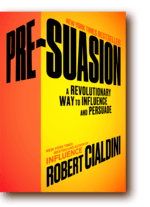
In a nutshell ...
Gain influence by capturing and channeling attention.
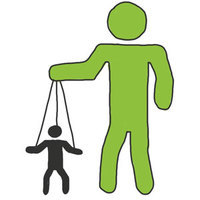
Professor Cialdini covers important preparation steps. Every pro negotiator should take these before executing the attack.
You not only need to capture attention to achieve the best possible results. You also have to channel it in the right - desired - direction.
Preparation here means time spent BEFORE you make your request to your counterpart. This could be off but also on the negotiation table.
What I liked & What I didn't like
Pros
Cons
Very applicable to our current life
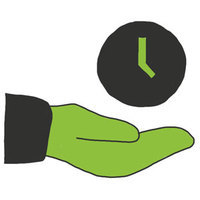
Every communication nowadays is facing a huge challenge: attention span decreases. To get and to keep attention becomes very important, especially in negotiations.
I like that this "Pre-Suasion" appeared "in time" for me. Although there are a lot of great tactics around these days, it becomes harder and harder to apply them.
Receiving the focus of your counterpart is crucial. And then to "move it" in your desired direction is key to negotiation success.
Awesome examples

In his book "Influence" Cialdini put huge emphasis on providing battle-tested examples. The same here. And lots of them.
His first work was kind of scientific and provided great insights. But this negotiations book - 20 years later - is tailored to businesses and communication in general.
One example I loved was that of a fire insurance sales guy. Before posing his request, he always mentioned that he forgot something in the car and wants to get it. He asked the following. Would it be ok, if he gets the keys to the front door? The house owner then doesn't have to stand up to open the door and he can get his materials? The success rate with house owners who allowed this was through the roof. It worked so well because giving someone access to your house is a huge proof of trust.
These examples are called a "pattern interrupt". This also helps to gain (and keep) attention. I talked about this above. From this work you can discover, why these pattern interrupts are so beneficial.
Pre-Suasion + Influence = Maximized Leverage
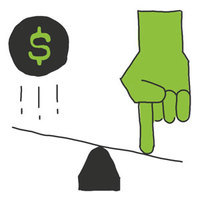
If you combine both of Cialdini's works from this list of best negotiations books, you will hold a heavy weapon in your hand. Make sure to use it the right way.
Influence gives you guidance about the what and how to apply it to your communication. Pre-Suasion helps you to execute your strategies at the right time. It also helps to prep your counterpart for it.
This provides a good theoretical timeline on how to apply the ideas from both books together, too.
Easier said than done

The combination of Pre-Suasion and Influence is a well designed and subtle approach. It can become difficult if you have people in your negotiation team, that tend to be loud. Through their interruptions they take the carefully established attention away from you.
You can always do a de-briefing but especially with very "loud" people this only goes a certain way.
Cialdini knows, that his work gets applied to business scenarios. He could have spent a little more time on how to brief people upfront. This helps them to play their role and not blast our tactics. Or you give them my list of best negotiation books and act while they read.
What is unique about it?
The very practical way on mastering the attention of your negotiation counterpart. After that you can max your influence on them when applying the 6 influencing factors.
Applied to a real negotiation ...
Imagine a conflict driven negotiation situation with a lot of bad mood. Accusations everywhere - from us and them. Previous supplier offers were more a provocation than a real offer.
So we prepped the room for the next round. Walls showed posters of winning, doing things together and similar. We also talked no longer of customer and supplier but rather of partnerships. Then we even spent a little time on how a potential "victory" for all would look like and how we would celebrate it.
At first glance the team thought that stuff like this could not work, it's too obvious (and too easy). But the underlying psychological principles seem to be hard wired in us.
Moods were so much better and we got much further than expected. It was the first time our supplier made a constructive counter proposal. This led to a negotiation result, that was acceptable to both sides.
Summary
You need to channel and keep the attention of your negotiation counterpart. You are going to win that deal even before negotiation starts. This place #3 on my list of best negotiation books is about preparation. No matter if on the table or off the table. This negotiations book shows you how to do it. Driven by lots of examples and ideas how to apply them, the book comes in time for real world negotiators. It helps to succeed in the challenges we are facing these days.
Never Split the Difference by Chris Voss & Tahl Raz
Book information
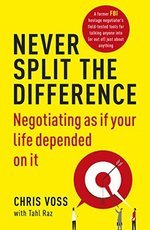
In a nutshell ...
Even in business (maybe even more than elsewhere) emotions trigger a negotiation result.
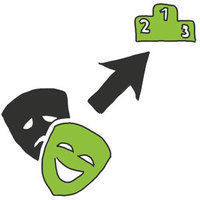
This work is a masterpiece in this list of the best negotiation books. You will find a treasure chest full of negotiations gems in it. Uncovering a bluff. Labeling their feelings. Getting the right form of "yes" or bending the counterparts reality, this book has it all. It is especially helpful, when you're in the process of negotiating agreement without giving too much. Or anything at all (because it's impossible).
It's a good front to back approach for all kinds of communication situations. Additionally, the author provides interesting insights how a hostage negotiator works.
What I liked & What I didn't like
Pros
Cons
Proven FBI Strategies translated into business

I have a favor for thrillers and crime. So reading a negotiations book from a FBI hostage negotiator was a no-brainer.
It's amazing to see how the author translates his strategies into business environments. Communication strategies with people's life depending on it applied to deal making.
I liked the fact that a lot of today's negotiations take place in a virtual environment, too. This is very comparable to talking to a kidnapper via phone.
Discovery: you can (and should) mirror, even if you can't see the counterpart.
Lots (and lots) of amazing examples
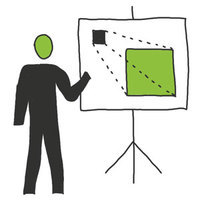
The examples in place #2 in my list of best negotiations books might seem very exotic at first. You rarely negotiate in business as if your life depends upon it. But Chris has an amazing deduction chain that leads to core human belief systems. You can then apply these in business situations.
For example finding the "black swan". A black swan is an unpredictable situation or influence. It's something that seems to be crucial in hostage situations. But it also happens day in day out in business. You think it's all done and suddenly, the results are in danger again. You should prepare for this and Chris helps here with his tools.
Counter Intuitive to What Most People Think
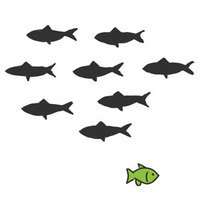
Some of the tactics, that Chris describes in this book are very counter-intuitive. Getting and collecting "no's" or doing an accusation audit are not seen very often.
But he explains why not every "yes" is worth the same (bye, bye, "Getting to Yes" by Roger Fisher & William Ury). Instead he suggests that blaming oneself helps in posing the right anchor.
The examples in the book go much deeper than in other negotiations books. And they lead to better results, too.
Additionally these unexpected actions work great as pattern interrupts. By now, you know why this is a great opportunity.
Tactical Empathy is Nothing New
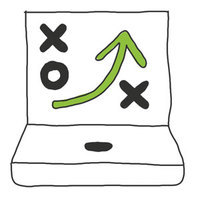
Chris claims to be the inventor of tactical empathy. He may have invented the label for it but the underlying concept is not new. This can lead to mistrusting the author and not trying out his otherwise great practices.
Extra material pushy & little bit unstructured
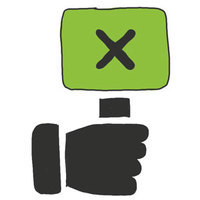
Within the book, the author offers extra material on his website. But only if you give them your email address. The material is not bad but it's not awesome as well. The book itself is much better than the extra material. It also feels somewhat unstructured.
Sooner or later they start pushing hard their online courses to you. These come at a ridiculous high price (like $2,000+ for a 20 video / few hours online course). Here they try to sell their brand, this somehow is too pushy for me.
What is unique about it?
The approach to uncover bluffs is unique and was - in this approach - new to me. It works like a charm and is an amazing way, to get more clarity for yourself in a negotiation. You could use these discoveries to dig deeper and find out, what the other party REALLY wants.
Also the accusation audit (see above) works very good together with anchoring and framing.
Applied to a real negotiation ...
Chris introduces the concept of "mirroring". You repeat the last words of your counterpart to uncover a bluff. I recently used this in a discussion with a supplier, we wanted to engage. In the financial discussion they said, that their people are special. They also mentioned that they pay above the average salaries. All very expensive to them. So going down any further would lead to a negative margin...
... Negative margin?? (imagine me saying this in what Chris calls "the late night DJ voice")
The fact that he repeated his statement but in a much weaker and apologizing way was a clear indicator. This "fact" was a bluff in reality! Then we established a friendly and "warm" situation (tactical empathy). Later on we asked the crucial question.
"Let's be honest here. Is it about your people being so special or is it right to assume that it's something different?"
We collected a "valuable" yes and improved contract terms.
Summary
This masterpiece is a close follow to my number 1 for the best negotiation books. Chris covers the negotiation cycle end-to-end with hands-on and innovative ideas. This leads to great improvements in results. Collecting "no's", mirroring, accusation audit are just a few of the amazing tactics.
Influence by Robert Cialdini
Book information
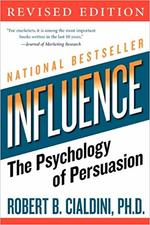
In a nutshell ...
There are 6 factors of influence that are hard-wired in our brain and we can't escape them.

Here is number 1 on my list of best negotiation books. This work from the 80s covers how we can gain influence over others (and others over us). It follows a hands on way to describe the 6 influenceing factors that are hard-wired in us.
More than that it also shows, why we often "tick" no different than animals. They react with their instincts and so do we. However, this best negotiation book doesn't end there. You discover, when others apply these techniques on us.
It's interesting that we usually can't escape our reactions when the instincts kick in. And this top recommendation in my list of best negotiation books explains why.
What I liked & What I didn't like
Pros
Cons
The 6 principles of influence
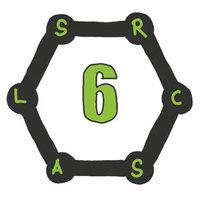
Professor Cialdini discovered that these 6 methods of influence are deeply anchored in our brains:
Detailed explanations

If you need scientific proof for any of the "theories" covered in this list of best negotiation books, this is the book to get it. Cialdini did a long self experiment to come up and discover these eternal truths.
He has amazing examples from all walks of life. For example social proof. Did you know that canned laughter proves to make TV shows perceived as more humorous.
Did you know why fundraising dinners are so successful? Why do the important presentations always happen during or after the meal? Reciprocity!
Could you translate this into negotiations with your suppliers?
Cialdini covers the 6 measures of influence with in-detail show cases. Translate this into everyday negotiation tactics and you will succeed. Read below to see some of them in action.
Psychological background
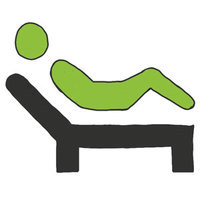
#1 in my list of best negotiation books explains very well, not only what works and the how but also why. Why do some things (like the little word "because") work so well?
You get an insight look into how our brains work. Some would say, that they are "too experienced" for this but - more often than not - these principles work.
Why do we sometimes react to certain principles like the famous Pavlov's dog? This book covers it in detail. This is also the reason, why these tactics are applicable to our negotiations.
What is unique about it?
Cialdini wrote this piece as a popular science book. But the easy applicability of the principles in negotiations make it unique. You get lots and lots of ideas. The discovery and description of each of the principles helps non-scientists understand them. And then we tailor the principles from this top book in my list of best negotiation books to our next negotiation.
Suggestion: Brainstorm a few minutes over each of the six principles. I bet that you get lots of different negotiation tactics you can apply right away. Time well spent
Applied to a real negotiation ...
This could be a whole article on its own so I list just a few examples I have used:
Summary
A true masterpiece to introduce the 6 principles of influence to us. This includes many examples that spark ideas on how to apply them yourself. And you can start today. On top you discover the psychological background and why these amazing principles work.
Conclusion (which is the best one?)
If you could only read one of these best negotiation books, here's my top recommendation. I would suggest to read Robert Cialdini's Influence. The theories and discoveries in this great book will help you big time with easy to apply actions. The truths showed in this masterpiece are eternal and hard-wired in our brain.
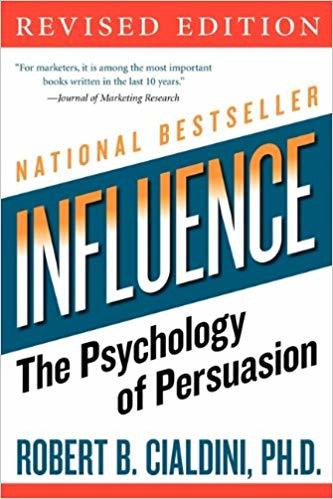
Especially when it comes to no. 6 scarcity (the rule of the few) it will help you to be more successful. True for both business and private life. It will also help you to discover when scarcity is applied to you and / or your colleagues. After reading it I promise you, that you will have a seventh sense for scarcity tactics. You uncover that is it's played upon you day in and day out. Additionally, you learn to fight "false scarcity". And you discover how to apply this principle yourself if you need to.


Phil, this is amazing – Thank you!
Thank you @Tobi. Happy, that you like it 🙂
Many thanks for your insight. Am in the construction industry negotiating contracts with employers so which of the books will you recommend for me.
Hi Samuel,
for a salary negotiation (if I got you right) I would definitely recommend “Getting More” by Stuart Diamond, because it contains some very good insights that also apply to this special type of communication. E.g. Moving Northeast translated into a salary negotiation could mean, how can you make yourself and your employment more valuable to your future employer?
If you have a little bit more time, I also think the Pre-Suasion by Robert Cialdini would surely help because it provides you with ideas on how to prepare the ground for your discussions (e. g. getting attention, making the other party focus on you and what you have to say / offer).
Hope that helps and thank you for the kind words.